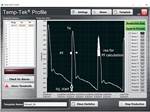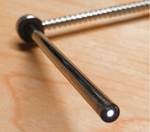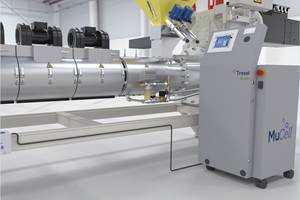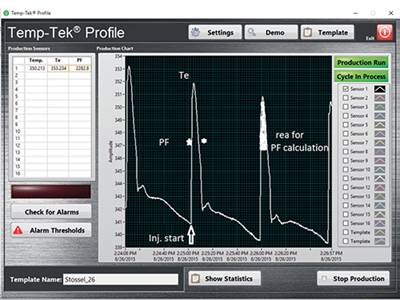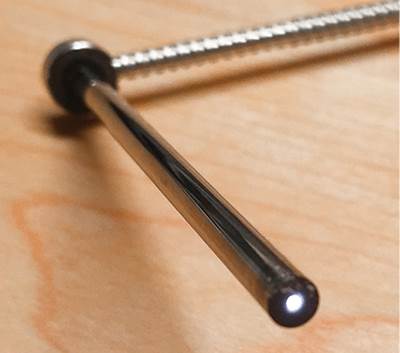Solving the Mystery of Melt Temperature
Two new types of sensors are said to be the first practical means to measure "true" melt temperature inside the machine or mold.
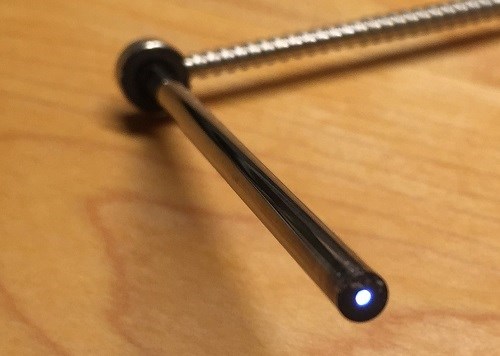
However much we think we know about the injection molding process today, I’ve been talking lately with a number of molders and molding experts, who agree that we still don’t know very much about what is happening to melt temperature inside the machine and mold. Some of them call it, frankly, a “mystery.”
I’m no Sherlock Holmes, but I deduce that a solution—or two—may have arrived. Keep an eye out for our October issue, which should appear online next week and in the mail soon after.
Up to now, molders have had two options. They could put a thermocouple in the nozzle, but its readings are affected by the surrounding steel as much as the melt. And if the sensor projects into the melt stream, away from the steel, it is subject to wear and damage, and induces extra shearing that distorts the reading.
I’m told the only practical means of measuring melt temperature is to purge a blob of melt and shove a sensor into it by hand—a procedure that is both clumsy and plagued by numerous variables and inconsistencies, not to mention that it interrupts actual molding.
Enter in Youngstown, Ohio, which is offering a unique melt-temperature sensor that can be placed in the machine nozzle, mold cavity, or mold vent. As explained by company president Mike Durina, the sensor responds to both temperature and pressure, which makes its operation a little complicated to explain, so I recommend reading the full Close Up article. In short, during the injection filling and packing stages, the sensor reading reflects the total energy input (or “work”) into the melt. However, at the end of the cooling stage, before screw recovery starts, when the melt is under little pressure, the sensor reading stabilizes at a level that corresponds to melt temperature alone.
The manager of one molder’s tech center got his best technicians together and had them all perform manual-purge temperature measurements, and the average of their results corresponded nicely with the readings of Md Plastics’ Temp-Tek sensor. “Pretty darn good,” he concluded.
Durina notes that the Temp-Tek sensor can also be used in other processes: In blow molding, it could be placed in the mold or inside the parison to measure the air temperature there. In extrusion, it could be placed in the melt stream or in the die; it could also measure the air temperature inside a blown film bubble, providing information not usually available. I thermoforming, the sensor could be mounted between the sheet and the mold.
While I was researching the story on that sensor, I learned that , Schaumburg, Ill., is introducing to the U.S. a reportedly unique infrared sensor (photo) that directly senses the temperature of the melt without being influenced by the surrounding steel. It’s fast—8 millisec response time—and provides a wealth of information: For example, if placed in a mold cavity, the measured cooling rate correlates with the degree of packing of that part. It’s being used in Japan by major customers such as Toyota, Nissan, Panasonic, and Denso. There’s more on this in the October Keeping Up section. By the way, the person to contact at Futaba is Mr. Yasuo Ishiwata (yishiwata@futaba.com).
Related Content
A Purge Solution for the Blow Molding and Compounding Industries
New commercial purge compounds for new industries from Chem-Trend.
Read MoreProcessing Megatrends Drive New Product Developments at NPE2024
It’s all about sustainability and the circular economy, and it will be on display in Orlando across all the major processes. But there will be plenty to see in automation, AI and machine learning as well.
Read MoreMultilayer Solutions to Challenges in Blow Molding with PCR
For extrusion blow molders, challenges of price and availability of postconsumer recycled resins can be addressed with a variety of multilayer technologies, which also offer solutions to issues with color, processability, mechanical properties and chemical migration in PCR materials.
Read MoreFoam-Core Multilayer Blow Molding: How It’s Done
Learn here how to take advantage of new lightweighting and recycle utilization opportunities in consumer packaging, thanks to a collaboration of leaders in microcellular foaming and multilayer head design.
Read MoreRead Next
New Sensor Tech Monitors State of the Melt During Molding
Detect ‘true’ melt temperature, viscosity variations, melt density, and much more, throughout the molding cycle.
Read MoreINJECTION MOLDING: Infrared Sensors Measure ‘Real’ Melt Temperature
Mold-mounted fiber-optic sensors do what ordinary thermocouples can't.
Read MoreMaking the Circular Economy a Reality
Driven by brand owner demands and new worldwide legislation, the entire supply chain is working toward the shift to circularity, with some evidence the circular economy has already begun.
Read More
